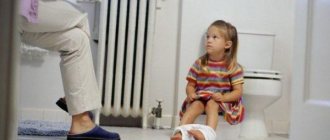How to Reduce Teething Pain
Fever and pain can be reduced by:
- massage the gums where tooth eruption is expected;
- the gums can be lubricated with an anesthetic;
- give the child a vasoconstrictor if the child has a runny nose;
- if the temperature rises above +38C, then the child should be given an antipyretic in the form of a sweet syrup.
Usually, the eruption of baby teeth occurs without complications. In some cases, a complication may occur that is caused by:
- Presence of a dental cyst.
- When the baby tooth has not yet come out, but it is supported by a permanent tooth.
- When a fang erupts, it is out of place in the dentition.
The appearance of a second row of teeth in the jaw
Each canine, incisor and molar has its own place, but sometimes a child's permanent teeth begin to form a second row. This often happens when the milky ones have not yet fallen out, but the radical ones have already begun to appear. An undeveloped jaw that provides too little room for growth can also be a source of the problem. The third reason is that the incisors and canines in the second row are “superfluous”, or supernumerary.
The second row of teeth is not only inconvenient, but also unsightly, so the problem needs to be solved. A baby tooth that does not fall out in time can be removed in the clinic. If the reason for the formation of the second row is underdevelopment of the jaw, then the dentist can remove several teeth and install braces on the remaining ones.
Eye teeth in older children
Permanent eye teeth erupt in children aged 9-12 years. Normal eye tooth eruption should occur painlessly. If pain still bothers the child, it may be caused by:
- the presence of infection in the oral cavity;
- periodontal disease;
- development of dental caries.
The eye teeth may erupt in a crooked manner. Orthodontic treatment helps correct abnormal tooth growth. If a tooth erupts and grows incorrectly, it is removed on the advice of a dentist. After removing an eye tooth, it must be immediately replaced with a prosthetic so as not to disrupt the integrity of the dentition and not to impair the process of chewing food.
Features in adults
Although eye teeth tend to be more of a concern for young children, adults also often have questions related to some type of canine problem.
- At what age does the replacement of primary canines with permanent ones occur? Typically, the eye teeth on the upper jaw appear a little later than on the lower jaw. The approximate age when the lower canines grow is 9-10 years, and the upper ones are 11-12 years.
- How many permanent eye teeth appear and can they erupt before the front teeth? The canines appear fifth in the permanent dentition - after the first molars (5-6 years), central and lateral incisors (6-9 years), and first premolars (10-12 years). Violation of this pattern of eruption of permanent teeth can be both an individual characteristic of a person and a sign of serious dental pathology (for example, adentia due to the death of the rudiments of permanent teeth).
- Why can an eye tooth hurt? Normally, a healthy person should not have any pain in the teeth. If the eye tooth still hurts, then this may be a sign of a serious pathology: periostitis (flux), pulpitis, periodontitis and others. In any case, you should not engage in independent treatment - it is better to consult a dentist for qualified help. The only thing you can do before visiting the doctor is take a pain reliever.
- What to do if the eye tooth has grown incorrectly? Dental anomalies in the form of crooked teeth are quite common. In some, this defect is practically invisible, but sometimes the fangs erupt at a considerable distance from their intended place. This situation can be corrected by orthodontic treatment (braces, mouth guards), but sometimes, in especially severe cases, the doctor suggests pulling out a crooked tooth to straighten the dentition.
- Is it possible to remove eye teeth? Removing any tooth is an extreme measure that the dentist will only take as a last resort. And fangs are no exception to the rule. Premature loss of a baby eye tooth can lead to the formation of malocclusion, and its removal in an adult significantly impairs the chewing function of the teeth and also negatively affects a person’s appearance. But if you still had to pull out a fang, then you should have it prosthetically installed as early as possible.
While the eye teeth are special, the importance of the rest cannot be underestimated. It is necessary to carefully monitor the condition of the oral cavity - only this will help maintain a healthy and beautiful smile until old age.
How to reduce pain in an eye tooth using traditional medicine
Dental treatment of the eye tooth can be supplemented with treatment with traditional medicine. Typically, after visiting a dentist in a specialized clinic, they advise the following:
- Dissolve a teaspoon of baking soda or salt in a glass of warm water. Rinse your mouth with this solution several times a day.
- Prepare a decoction of medicinal herbs: chamomile, sage, or make an infusion of oak bark. Rinse your mouth with prepared decoctions and infusions several times a day.
The eruption of eye teeth in children should occur under the supervision of a pediatric dentist. Adults who have problems with their eye teeth should also see a dentist.
How to distinguish baby teeth from permanent ones?
Both molars and baby teeth have a similar structure, but have a number of external differences.
- Thus, milk ones are on average lighter and whiter than permanent ones, which are distinguished by a yellowish enamel tone.
- On average, a molar is larger than its primary tooth.
- Permanent ones have a thicker layer of hard tissue and a less developed pulp.
- Dairy varieties have thinner and shorter roots.
It is important for all parents to remember that both baby and permanent teeth of children must be protected, and any problems that arise in their growth and development must be resolved immediately. Specialists from the “A-Medic” network of medical clinics can help them with this.
Temperature during teething: causes, duration
When teething, the child's body experiences severe stress and reacts to this with an increased temperature. In order not to confuse a common cold and teething fever, you need to know what exactly happens when teeth are cut.
The reason for the increase in temperature during teething Temperature does not just happen. The child’s body reacts in this way to the inflammation of the gums, through which the tooth will soon emerge. At this time, immunity at the site of the future tooth decreases, and various microorganisms begin to become active, which also cause fever. Up to a year, teething occurs more or less calmly and does not cause severe inconvenience, but after a year, when fangs begin to erupt, which take longer to appear, the baby may experience pain, accompanied by fever, for up to several weeks. Often the temperature rises not because of inflammation of the gums, but because of viruses that have entered the body or infection due to reduced immunity. The body uses it to fight them, because they are not able to exist at high temperatures, so they die.
How much can the temperature rise? How much the temperature rises is individual for each organism. Normally, it can vary from 37.5 to 38.5 degrees. It is necessary to measure the temperature every half hour or hour, because in young children it can rise very quickly because their body is not yet able to properly exchange heat. If the temperature begins to reach 39 degrees, you must immediately call an ambulance, because this may mean the appearance of various complications.
Duration Regardless of the examples given, all organisms react differently, so for different children everything can develop according to its own scenario. Usually the temperature lasts 2-3 days and disappears when the tooth erupts. There are also cases when the temperature lasts for 5 or even 7 days, and the temperature can rise and disappear completely after a few hours. Be that as it may, a doctor still needs to be called to examine the baby. To exclude complications and a number of other diseases, so that if something happens, they can be treated as early as possible.
What are the symptoms besides fever? Temperature is not the only sign of teething. At the same time, a runny nose may occur due to the spread of swelling from the gums to the nasal mucosa. This happens when the upper teeth erupt. Also one of the symptoms is excessive salivation and weak stool of the baby.
What symptoms should you be wary of? Due to reduced immunity, the child’s body is not able to fight many viruses and infections. The following signs may indicate their presence: • the nose is very stuffy, and snot flows from it in large quantities. This means that rhinitis has joined the edema, it must be treated; • diarrhea. Very rarely it appears along with a temperature, but it still happens. This could mean some kind of intestinal infection acquired by the baby through toys; • cough. Due to severe drooling, children do not always have time to swallow saliva, so they can sometimes choke on it, resulting in coughing. If the cough is repeated systematically and there are signs of sputum, then inflammation of the respiratory tract has been added to the temperature; • reddened throat. In addition to the nasal mucosa, swelling can also spread to the mucous membranes of the throat. This may mean the appearance of pharyngitis or acute respiratory infections; • nausea and vomiting. They occur at a very high temperature, perhaps this is a symptom of an intestinal infection or damage to the nervous system. If your baby exhibits these signs, you should immediately consult a doctor who will prescribe the necessary treatment, regardless of the presence of fever.
What measures to take in case of high temperature? Many parents begin to give antipyretic and antiviral drugs when the temperature rises slightly. This cannot be done, because you need to allow the body to fight the virus on its own. Abuse of such drugs can lead to addiction, and the body will not be able to cope with infections and viruses on its own in the future. Pediatricians advise not to lower the temperature until it reaches 38 degrees, because you need to let the body fight. If the effectiveness of antipyretic drugs is low, you can wipe the baby with slightly cool water or rub it with an alcohol solution with the addition of vinegar. Sometimes parents resort to a method such as homeopathy, but with the help of these remedies they will not be able to effectively reduce the temperature, although they can generally improve the condition of the baby. If the temperature does not subside for more than 3 days, you should consult a doctor.
Is it possible to walk when there is a fever? If the baby’s health is normal and the temperature is not too high, then a walk in the fresh air will only bring benefits. Only the child needs to be dressed according to the weather. You need to walk calmly so that he doesn’t get overtired. Even if you are sure that the temperature is a consequence of teething, you still need to call a doctor who will make an accurate diagnosis and prescribe the correct treatment. Self-medication in this case is unacceptable, because if you make a mistake, you can harm the baby’s health.
Sign up for treatment and consultation with a pediatric dentist!







